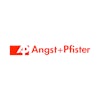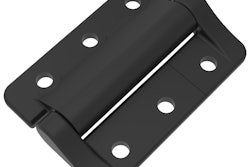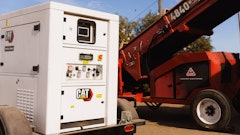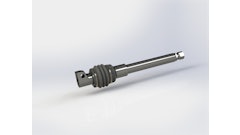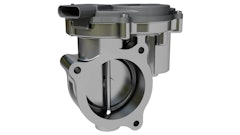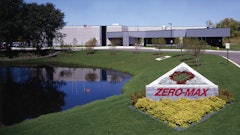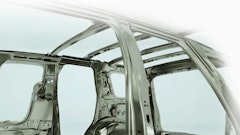
More than 50% of construction equipment is owned by rental companies.1 These companies need to make sure that their equipment is both highly usable and ergonomically designed to appeal to their rental customers. Equipment rental companies are seeking more sophisticated control and tracking to see who is using what equipment and when; they also seek to ensure that only those operators who have authorization and training to operate equipment can access it.
Additionally, rental companies want to make sure that the ergonomics of their equipment is first-class: Whether it’s the way display screens are mounted in cabs so that they are easy to position or adjust, or the types of locking mechanisms and positioning systems on equipment lockers and other external doors and hatches, rental companies are challenging construction equipment manufacturers to “equip” their products with components that are well-engineered and easy to operate.
Improving access points in construction vehicles
While there are some recent indications of a potential slowdown in the construction vehicle market, demand is still relatively strong in the rental market. This has led to increased attention by original equipment manufacturers (OEMs) towards finding better ways to use components in various access applications — to ultimately help distinguish their machines from the competition.
One recent area that has been a major focus is improving operator cab air quality by refining heating, ventilating and air conditioning (HVAC) systems in the vehicles. This includes better sealing of the cabs to control cool air leakage as well as to keep dust out. To do this, they are using stronger, heavy-duty compression latches to close doors and windows, as well as access latches that secure doors covering HVAC air filters.
Read more - The Growing Demand for Clean Cab Air: What is it? How do you get it?
Since they are used in high-dust construction site environments, the filter access panels need to be tightly secured, yet easily accessible because they are changed out more often.
OEMs are also concentrating design efforts on enhancing the operator environment with comfort and convenience. This results in OEMs selecting hardware components that improve functionality and operator efficiency.
For example, the number of screens within the cab interior has been increasing so that operators can better monitor the status of a piece of equipment. In rental market applications, different operators are constantly working in these cabs. Just like seat and steering wheel adjustments, from an ergonomic standpoint, these screens also need to be positioned to account for the height differences of each operator.
 The number of screens within the cab interior is increasing to allow operators to better monitor equipment status. From an ergonomic standpoint, these screens also need to be positioned to account for the height differences of each renter operating the equipment.Sophie Caron via iStock
The number of screens within the cab interior is increasing to allow operators to better monitor equipment status. From an ergonomic standpoint, these screens also need to be positioned to account for the height differences of each renter operating the equipment.Sophie Caron via iStock
The use of positioning technology that has intuitive touch point characteristics and response can be extremely useful. Design engineers can improve operator ergonomics and maximize usability by incorporating display mounting and hinging solutions with engineered positioning systems.
For instance, there are hinges with integrated constant torque that allow single-handed adjustment of connected monitors. They are engineered specifically to withstand higher levels of vibration found in the rougher operating environments of off-highway applications.
Constant torque hinges use engineered friction to provide specific resistance against motion. Similar to laptop computer screens, they allow the positioning of a cab operator screen at any angle for tens of thousands of operating cycles without any degradation of torque — even under high-vibration conditions.
Read more: Southco E6 One-Way Constant Torque Hinge
These hinges also need to be robust, well-engineered parts: While rental companies may not be as concerned with ergonomics, they are interested in products that are rugged and able to provide thousands of hours of operating performance in dirty work site conditions, without requiring significant maintenance.  Hinges with integrated constant torque allow for single-handed adjustment of connected monitors throughout the cab and are able maintain their position by withstanding higher levels of vibration found in rougher operating environments.Southco Inc.
Hinges with integrated constant torque allow for single-handed adjustment of connected monitors throughout the cab and are able maintain their position by withstanding higher levels of vibration found in rougher operating environments.Southco Inc.
Outside of the operator cab, rental construction equipment has multiple tool cabinets and hoods covering engines as well as other equipment that needs to be tightly secured, yet easily accessible during the course of any workday. Intuitive access control and the ability to easily open and close heavy equipment panels are, in many ways, dependent on the types of hinges used.
It’s common for these heavy hoods to incorporate gas struts to help raise and hold them in place. However, there is a range of position control hinges, including torque hinges and counterbalance technology, which provide easier, safer ways to lift heavy hoods and hold them in place while the interiors are accessed to retrieve tools or perform maintenance tasks.
Both inside and outside the cab, these types of ergonomically friendly hinges and latching systems give construction rental companies machines that have a greater appeal to their end-users and are easier to maintain.
EAS helps improve off-highway security and operations
For rental companies, the one major difference between construction equipment and other industrial systems is location. These are valuable assets that may be at one site for a month, and then moved to another location for a couple of days and onto the next jobsite. Each time that piece of equipment is deployed to the site, the rental company needs to be certain it is operated efficiently and safely, and that it is secure from theft or vandalism when not in operation.
Until recently, off-highway equipment security – including access to operator cabs, toolboxes and externally mounted equipment – was often very basic. For example, a mechanical key was kept in a maintenance locker and tracked via paper records. In this case, security from theft and vandalism is minimal as keys can be copied. Due to how common these keys are, rental companies often add a secondary padlock to cab doors and equipment lockers, creating an additional expense.
The introduction of electronic key fobs increased the level of security but still required a physical key to be provided to operators and then tracked and managed. Particularly in the construction equipment marketplace, this can be a time-consuming and complicated process.
There are cloud-based technologies available that can provide a better and more simplified means of controlling and monitoring access to construction equipment; in the process, rental companies will now have a robust, real-time tool for keeping track of the performance and return on inventory investment.
Providing electronic access solutions (EAS) can elevate intelligent access to and control of off-highway equipment. Integrating this technology into off-highway equipment involves adding electronic mechanisms that tie into the equipment controls in place of physical locks and keys. Major component suppliers are now offering EAS that integrate Bluetooth technology with electronic locks to simplify equipment access and key management. These systems allow an operator’s smart device — typically a smartphone — to act as a “key”.
Time-based, virtual keys can be sent wirelessly to a smartphone application via a cloud-based web portal, simplifying the assignment of keys to multiple users and equipment. Operation is intuitive, as the operator or site manager simply opens the app on their phone to see their virtual keys, along with the associated locked equipment location, description and period of access time.
Read more: Southco AC-EM 10 Electronic Actuator
This can simplify operations at the rental yard or work site. Without EAS, rental equipment stored in a dedicated location needs an attendant who handles documenting and handing over mechanical keys; if a piece of equipment is on site for multiple days, someone from the construction crew has to handle collecting and distributing keys on a daily basis.
EAS can eliminate this requirement because the rental agent can provide access remotely. Once the renter is provided access via the cloud, they need only approach the equipment and click the access button on the app. The button transmits the encrypted signal to the reader, unlocking the door and sending a record of the access via the smartphone app to the cloud.
One of the most important advantages is the real-time aspect of this information: EAS identifies who is using what equipment and where, in real or near-real time. This data can then be integrated with other data streams within the equipment for more comprehensive utilization of information, aiding in planning, cost analysis, distribution and other management areas.
 Electronic access solutions, such as electronic locking and access control devices, offer a smart, proven and easily integrated way to improve the physical security of construction rental equipment. These solutions can be connected to an existing network or integrated with cloud-based geofencing technology to track access to equipment.Southco Inc.
Electronic access solutions, such as electronic locking and access control devices, offer a smart, proven and easily integrated way to improve the physical security of construction rental equipment. These solutions can be connected to an existing network or integrated with cloud-based geofencing technology to track access to equipment.Southco Inc.
Properly maintaining heavy-duty equipment is a crucial management topic for owners and operators. Reliability and cost are main drivers in the ROI of their machines, with higher efficiency continuing to be the primary goal.
For rental fleet operators, this can be a challenge. Because the renter doesn’t own the equipment, the operator using it every day may not be concerned with routine maintenance activities, such as changing an air filter or servicing the engine. However, IoT-enabled autonomous vehicles typically have multiple internal sensors gauging the “health” of the engine and auxiliary equipment. These sensors can now provide feedback for predictive maintenance, helping to avoid costly repairs and downtime.
Incorporating EAS into equipment that connect to these systems simplifies remote monitoring for the rental provider. To reduce the likelihood of equipment failure, OEMs can use the data generated by autonomous systems to monitor the maintenance needs of a vehicle remotely, from anywhere in the world.
In addition, intelligent latches can control whether an individual can gain access to a maintenance area of the vehicle. The owner can also track the door status of the equipment – when an access panel was opened, if it was closed, who accessed it – and can even trigger alerts to the driver if a door is not properly secure. Each time the door is accessed, a digital record of activity is generated that can be used later to improve vehicle efficiency.
EAS allows the equipment rental company to monitor access wirelessly and remotely from any Internet portal without having to connect to an existing security network. Rental companies and OEMs are also experimenting with using EAS platforms that integrate with “geofencing.” This concept controls where a piece of equipment is permitted to operate. If it moves outside the geographic confines of that defined area, it shuts down until permission is granted or the machine is returned to the correct location. Electronic locks and access controllers can be connected to geofencing interfaces to track access to equipment to help keep it secure.
Read more - Next Generation Security: Advanced Electronic Access in Off-Highway Equipment
Elevating off-highway equipment value
Applying advanced technology to the challenges of operator ergonomics and equipment access can help rental companies make sure their construction and off-highway equipment is safer and adequately managed.
EAS technology enhances operational safety and security by ensuring that only properly trained and authorized personnel have access to heavy-duty equipment. Electronic access systems can also be used to generate valuable information about equipment uptime and utilization, personnel efficiency and operating costs.
At the same time, applying the latest positioning and latching technologies both within the operator cab and on other access points in the vehicle help improve the end-user experience, while ensuring that rental companies are providing their customers with state-of-the-art, finely engineered equipment designed to deliver maximum performance and efficiency at every jobsite.

